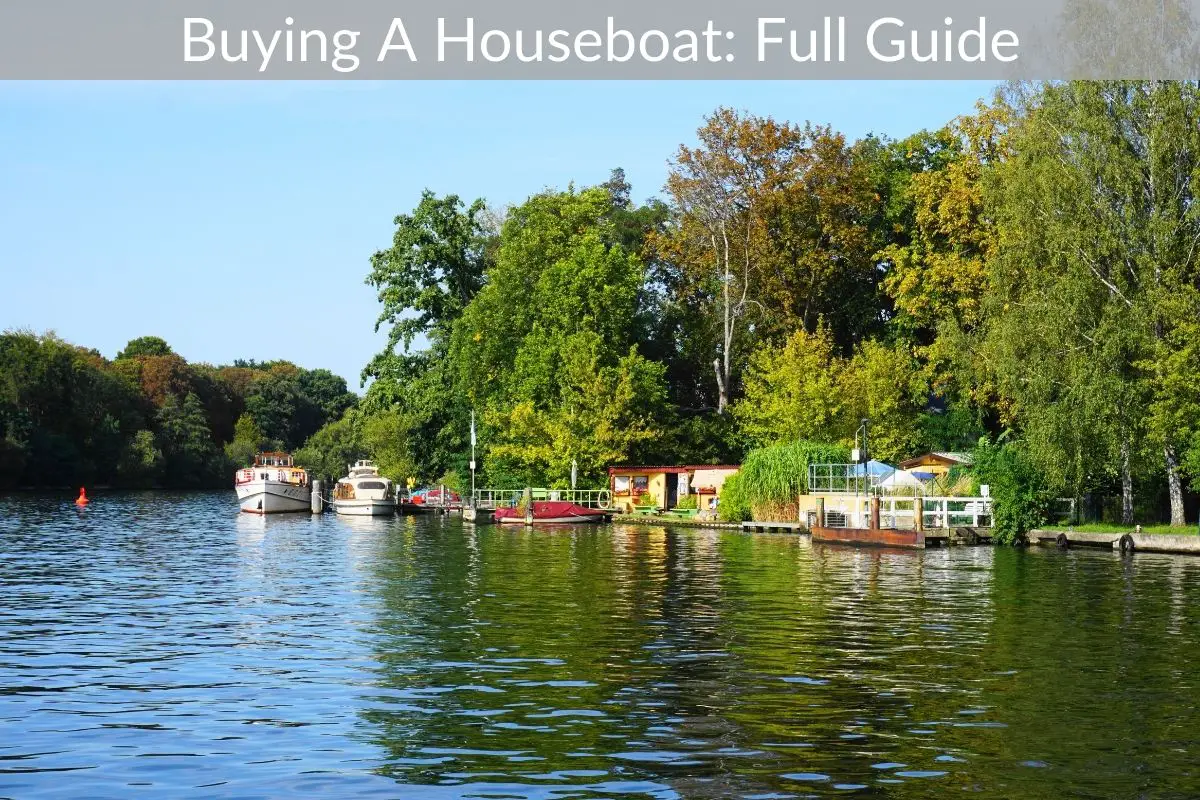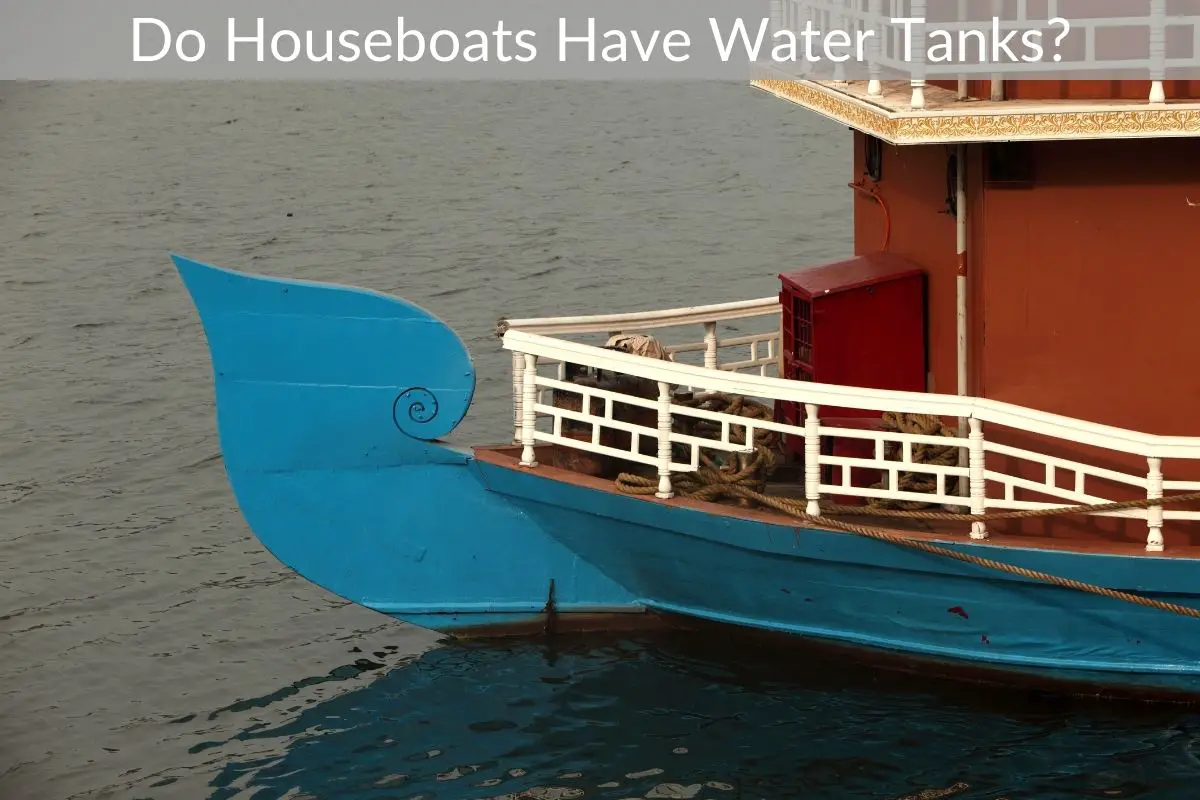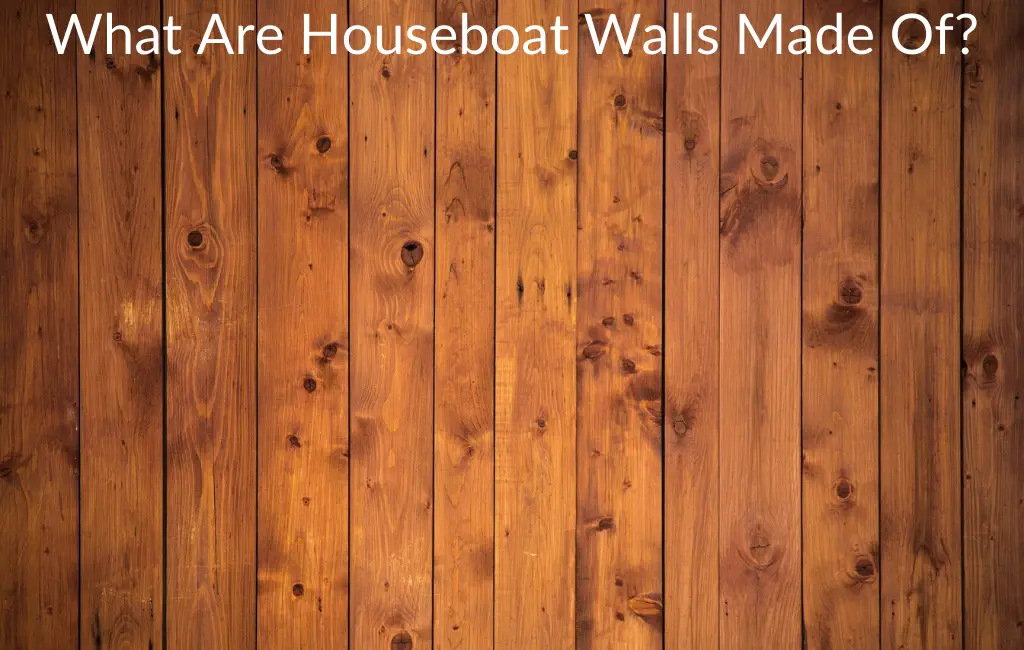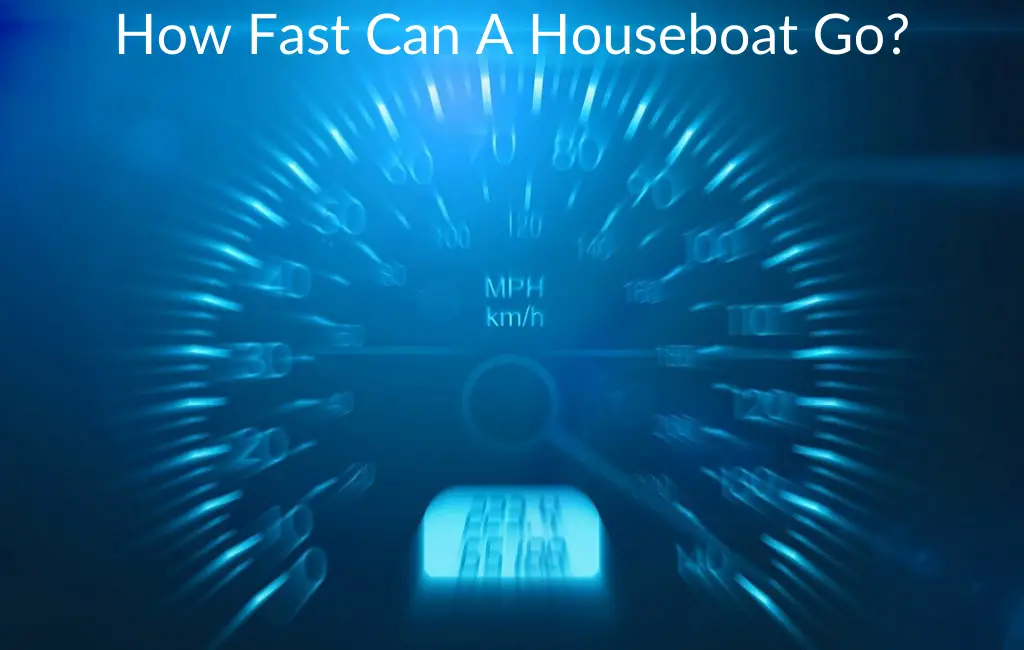Do houseboats have plumbing systems? The plumbing system on a houseboat is generally much more straightforward than that of a home. Instead of rigid lines running through the walls, there are tanks, accumulators, faucets, and shower drains to keep things running smoothly. Listed below are some of the more common houseboat plumbing systems. If you’re looking to buy a houseboat, keep reading to learn more about the different systems.
*This post may contain affiliate links. As an Amazon Associate we earn from qualifying purchases.
Water tanks
All houseboats have water tanks, which are usually different in size. Fresh water tanks are used to hold water and are often connected to pumps. Grey water tanks are for waste water, which is usually disposed of overboard. Some installations divert grey water to holding tanks. Ideally, the water tanks on a houseboat are equipped with gauges that display their level. This is an important feature for boaters, as water consumption may be limited while on a long trip.
Bathrooms on houseboats are like those in regular houses, but the plumbing system is different. Houseboats use a pressurized fresh water system similar to an RV. Water from the fresh water tank is drawn through an electric pump, which routes it to the hot water heater. Sewage is also stored in tanks in houseboats. The sewage from the houseboats is disposed of using gray water tanks and black water tanks.
Grey and black water tanks should not be connected. Grey water tanks should be emptying at a marina to avoid the odor. It is best to empty the black water tank at a dock, where it is emptied properly. If your houseboat is 3 miles from land, it is possible to drain the black water tank into the ocean. While there are several options for disposing of gray water, it is always wise to follow the guidelines set by your marina.
Toilets
If you’re on a houseboat, there are several different types of toilets to choose from. A portable marine toilet, for example, can be used in houseboats that do not have permanent installations. Houseboats with toilets should have septic tanks, so you’ll have to empty them periodically. The good news is that most marinas offer pump out services and floating boats that can empty the tanks for you. However, you’ll have to pay every time you want to use the facility.
Boat owners should be aware that there are laws governing the disposal of human waste in waterways. In general, they should use low-priced holding-tank toilets. However, some houseboats are older and have a low income. So, make sure you read the regulations carefully and use the best option for your boat. If you’re traveling with kids, consider renting a boat with a toilet, or enlisting the services of a professional marine plumber.
Bio-digester toilets are another option. Bio-digesters have several chambers and a longer retention time. Bio-digesters are especially useful in regions with high water tables, such as glaciers. They can also be fitted with solar panels to keep excreta warm. A newer version is currently being researched for houseboats in Sringar. The cost for installing a bio-digester toilet on a houseboat can be as low as PS1000.
Waste water removal system
Houseboats have a waste water removal, or MSD, system, just like any other boat. Typically, houseboats have a holding tank, and you must empty it when you dock at the marina. Some marinas have a special boat for this purpose, which can suck out sewage while you’re docked. Otherwise, you must pump out the tank yourself. Fortunately, most houseboat marinas have a designated spot for this service.
The waste water removal system on houseboats is quite sophisticated. Black water from toilets is flushed down the toilet and processed on board. Solids are offloaded to shore, while the potable water is returned to the water. While these systems may seem like a hassle, they work perfectly for houseboats. Listed below are some of the most common systems used on houseboats. And as long as the boat is properly maintained, your houseboat should run smoothly for a long time.
There are several ways to dispose of waste water on a houseboat. The most common way is to pump out the black water at the marina and dump the grey water in the lake. Most houseboats cannot make it to the ocean, but there are many places that allow this. If you stay within three miles of the shore, you can dump your waste into the lake or the ocean. There are also a few ways to get your waste water off a boat.
Running water
While houseboats are generally not connected to permanent water systems, the plumbing systems on them are still unique. Houseboat plumbing systems are made to be flexible and efficient, and they must withstand the stress and strain of use while underway. A common choice for houseboat plumbing is flexible plastic tubing. These are easy to install and work with. The source for houseboat water may be an internal freshwater pump system or an external fill inlet.
One way to ensure that running water is available at all times is to connect the boat to a fresh water tank. This tank supplies clean, filtered water for the entire boat. Fresh water tank capacity varies by houseboat, but you can check the gauge to see how much water is left in the tank. The water tank is a critical component of houseboat water supply, so it is important to use it carefully. Running water in houseboats can be difficult to find, but it is possible to find a freshwater tank in the boat’s interior.
Besides freshwater, houseboats also have gray-water holding tanks. The gray-water tank is usually full, while the black-water tank is empty. Black water is typically discharged from the boat’s toilet into a marine plastic holding tank. This system is used for sanitation purposes. It may be difficult to locate a freshwater pump, but some houseboats have a sewer outlet to drain the waste water.
How Does Houseboat Plumbing Work?
How does houseboat plumbing work? A few things to keep in mind: Houseboats cannot dump raw sewage into inland waterways. They must be at least 3 miles off shore to dump sewage into the ocean. If you are concerned about dumping sewage, you can read this article and find out more. In this article, we’ll discuss how manual pumps work, freshwater systems, and sewage holding tanks.
Sewage holding tanks
Regardless of the type of houseboat you own, you’ll need to keep in mind that houseboats have special sewage and plumbing needs. In addition to the gray and black-water tanks, the houseboat’s bathroom needs special attention. Toilets are not always the best places for storing items such as tissues and other toilet paper, as they can clog the sewage system. The tanks must be emptying on a regular basis, particularly in hot weather because odors develop much faster.
The sewage holding tanks in houseboat plumbing are necessary to keep the water clean. They are located underneath the floor of the houseboat and contain a pump that grinds up the sewage and pumps it to the dock connection. Most non-cruising houseboats have a water hookup system and take their wastes through the sewage line. Depending on the size of the houseboat, it will be necessary to determine the frequency of tank emptying.
Chemical treatments are the least environmentally friendly and only kill bacteria immediately. They are effective in preventing odors, but they do not dissolve waste. A head chemical that kills bacteria is often required. Fortunately, the recommended amount is non-toxic and doesn’t contain formaldehyde or bromine, which are both toxic to human beings and to the marine environment. Instead, you should consider a Quaternary (quaternary) ingredient or bioactive treatment. Bioactive treatments contain live aerobic bacteria that emulsify the sewage.
Composting toilets
Many people wonder how to implement composting toilets in houseboat plumbing. The answer is simple: add saw dust or peat moss to your holding tanks. The sawdust will decompose into a natural fertilizer for your garden. Then, dump the waste into a bucket and refill it as necessary. These composting toilets can last for months. They are also highly effective at preventing odors and have zero impact on the environment.
There are many advantages to installing a composting toilet in your houseboat. For starters, you won’t need chemicals or disposal facilities. Composting toilets require two holding tanks and sufficient space. They decompose organic matter and allow oxygen to dry the waste. Then, they last for months or even a few days. They can even last for months without being emptied, depending on how often you use them. Compost toilets are especially useful for people who live off-the-grid, in remote locations, or have frequent guests.
Another great benefit to installing a composting toilet is the reduction of black water usage. The wastewater is treated and recycled into valuable fertilizers for plants. The system also makes composting waste safe and easy. It’s the most environmentally friendly way to dispose of waste. Composting toilets require little to no water and are ideal for houseboat plumbing. The only downside is that they’re not odorless, so the smell can be mildly unpleasant.
Freshwater systems
Most houseboats have freshwater systems to supply clean water for bathing, cooking and drinking. The water comes from a freshwater holding tank and is supplied by hoses and pipes to different areas of the houseboat. This freshwater system ensures that water is cleaned and stored without contamination. This system may require a freshwater pump for high pressure, depending on the boat’s size. Freshwater systems also keep wastewater tanks full and are useful when the houseboat is anchored.
For the water tank, rigid or flexible tanks are suitable. Flexible tanks are better for small and irregular spaces. The size of the tank depends on the available space, as well as your individual needs. Make sure the deck fill and vent terminate outside of the houseboat, so that water from the outside won’t enter the drinking water. Hoses for the freshwater system should be freshwater-rated, as hoses rated for saltwater will not perform properly.
In addition to freshwater systems, houseboats also feature a plumbing system. Similar to RVs, a houseboat uses a pressurized system for fresh water. An electric pump pulls water from the freshwater tank and routes it through the hot water heater. Separate blackwater and graywater tanks are installed for sewage disposal. This system can be used to connect with city water or provide potable water.
Manual pumps
Manual pumps in houseboat plumbing are often a welcome addition. Their simplicity and ease of use can minimize the hassle of dealing with a complicated system, and can also save battery power. The pump’s housing is typically made of aluminum or plastic, and hose connections are made with slip-on fittings or threaded couplings. Manual pumps should be winterized by draining the fluid from the pump and running antifreeze through the system. Manual pumps in houseboat plumbing are often corrugated or PVC hoses, or a black engine style rubber hose.
Rebuilding a pump is easy. Parts for manual pumps can be found at marine supply stores. Identifying the number on the pump’s body or taking a picture of it will help you find the appropriate part. Make sure to remove the pump from the boat before rebuilding it. If the pump is in a cramped area, use a table with a long enough surface to reach it. After rebuilding the pump, reinstalling it will allow you to properly connect it to the other parts.
Manual pumps in houseboat plumbing are another common option for freshwater filtration. Freshwater is pumped in from an external source through an inlet and a pump. These pumps are designed to handle pressure changes and prevent the boat from overheating. Manual pumps are particularly convenient when you’re sailing in an area where water levels can vary greatly. Choosing the right pump for your needs is important to avoid any unpleasant surprises. You’ll need a strong and steady hand for flushing.
Flexible water holding tanks
A flexible water holding tank is an ideal solution for hard-to-reach areas on your houseboat. Available in different sizes, they can hold 13 to 50 gallons of water. They are made of BPA-free plastic and feature a double-envelope design for easy cleaning. While they are convenient to use, be sure to purchase freshwater-rated hoses to avoid any problems. Saltwater can corrode a freshwater hose.
Houseboat water tanks typically have three threaded ports: one inlet and two outlet ports. Inlet and outlet lines connect to an on-deck fill and vent fittings high in the boat. A small overflow port prevents the water from clogging the system. For example, if you have two toilets on your boat, the water holding tank is too small for the number of people on board. Make sure to check your capacity and keep an eye on your water usage so you don’t run out.
Water-quality issues are another concern when deciding which kind of plumbing system is right for your houseboat. Some houseboats use ocean water as rinse water for the toilet. Then, water from the shower and sink drains into separate tanks. The latter is then flushed down a flexible hose to the dock connection. If your houseboat isn’t cruising, you can connect it to an on-shore water hook-up system and use the sewage line to remove waste. Most houseboats have a separate holding tank for black water.
Vent line
The Vent line in houseboat plumbing is a crucial part of your boat’s system. When you are underway, air is constantly forced into the fuel tanks. When you return, the air travels the opposite direction. This vent is usually located at the centerline of the tanks. It should not be located inside a wall or in a compartment. You should make sure that the vent reaches the centerline of the tank.
The Vent opening should be located in a place where water can enter without leaking. The vent opening should be large enough to allow peak air flow. Increasing the air flow is simpler than you might think, since you just go from a three-inch opening to a four-inch opening. Likewise, eliminating turns and constrictions at the connections will improve the air flow. Smooth walled tubing is another way to improve efficiency.
A Vent line in houseboat plumbing is also an excellent place to install the holding tank. A holding tank should be installed under a roof, but some boat builders choose to run the vent line up the mast. This method is not without its challenges, so make sure to get the vent line installed by a professional. If your holding tank is located underneath a V-berth, you will have to install a vent line.
Houseboat Electricity
Solar panels are being installed on houseboats in Kerala, and will soon replace the petrol or diesel generators used for propulsion. The panels will supply electricity to all electrical equipment. The energy management centre and the Ministry of Electronics and Information Technology are funding the project for the first few boats, and the cost of the solar panels could be recovered within two years. The power ministry may even subsidise the installation costs. If this project is successful, more houseboat operators are likely to switch to solar power.
The wiring in a houseboat begins with a switch panel that contains ground fault breakers. There may be only one panel, which contains switches that deliver 12 volt starting current. It’s important to check the wiring diagram before making any changes. Often, changes will adversely affect other systems. Before making changes to the wiring, make sure that you consult the factory. Changing it might have disastrous results, so record the change in the ship’s log.
The boat’s occupants do not typically come in contact with outside water. Often contaminated, this water is not fit for drinking or washing. Most houseboats have a tank filled with rainwater. This rainwater is filtered and reclaimed for use as washing water, but is still not sanitary. Many houseboats also rely on bottled water and other large containers. It’s essential that boaters have access to safe drinking water and power to keep their houseboats running.
Houseboat Air quality
A new study on houseboats and air quality outlines the dangers of carbon monoxide and how to avoid it onboard. The study also examines the effects of gasoline-powered generators without emissions controls. While more research is needed, some engineering controls are already in place. In addition to exhaust system modifications, houseboats should use air cleaners and filters that reduce CO emissions. The researchers also recommend the use of air purifiers to reduce the amount of smoke in the houseboat’s cabin.
Improving air quality onboard a houseboat is as simple as improving ventilation. Houseboats that move frequently can benefit from air conditioning and windows, which allow fresh air to flow in. Also, if you’re going to be cooking and cleaning onboard, be sure to install ventilation and air conditioning. Using these tools will not only improve the air quality inside your houseboat, but will also increase the comfort level. Ensure that the air ducts on your houseboat are clean and maintained regularly.
Those living on board may experience indoor air quality problems, which include irritation of the eyes and skin, headaches, colds, nausea, and fatigue. There are also a number of bacteria that live in the air and can cause illness. Listeria Monocytogenes, a bacteria that can live in extremely cold temperatures, prefers drains and other wet areas, and Staph Bacteria, which eat flesh. The Norwalk Virus is also known to affect cruise vacationers.
Water System Costs
A lot of people wonder how much it will cost to install a water system on their houseboat. The fact is that houseboat plumbing is quite different from the plumbing in land-based homes. For one thing, a houseboat uses an electric pump to move waste water and waste solids to a sewer system. When there is no power or water, houseboat owners don’t flush the toilet. Similarly, water tanks on a houseboat may need to be emptied just a few times a year.
Despite the similarities between non-cruise houseboats and those on land, the plumbing in a houseboat is quite different. Houseboat plumbing is designed to be efficient and flexible, and to withstand the rigors of use while underway. Houseboat plumbing often utilizes flexible plastic tubing, which makes it easy to install. Fresh water is available from an external freshwater fill inlet or from the boat’s internal fresh water pump system.
Houseboats that are capable of cruising need separate sewage systems, or holding tanks. A garbage disposal is a machine that fits between a sink drain and a trap. The garbage disposal uses electricity to grind food waste and releases the shredded waste into the plumbing system. There are two types of heads, manual and electric. Manual heads require a pump to be turned to flush the waste. Cruisers can also use different waste disposal systems. Some of them can treat waste or incinerate it into ash that can be legally disposed of.









